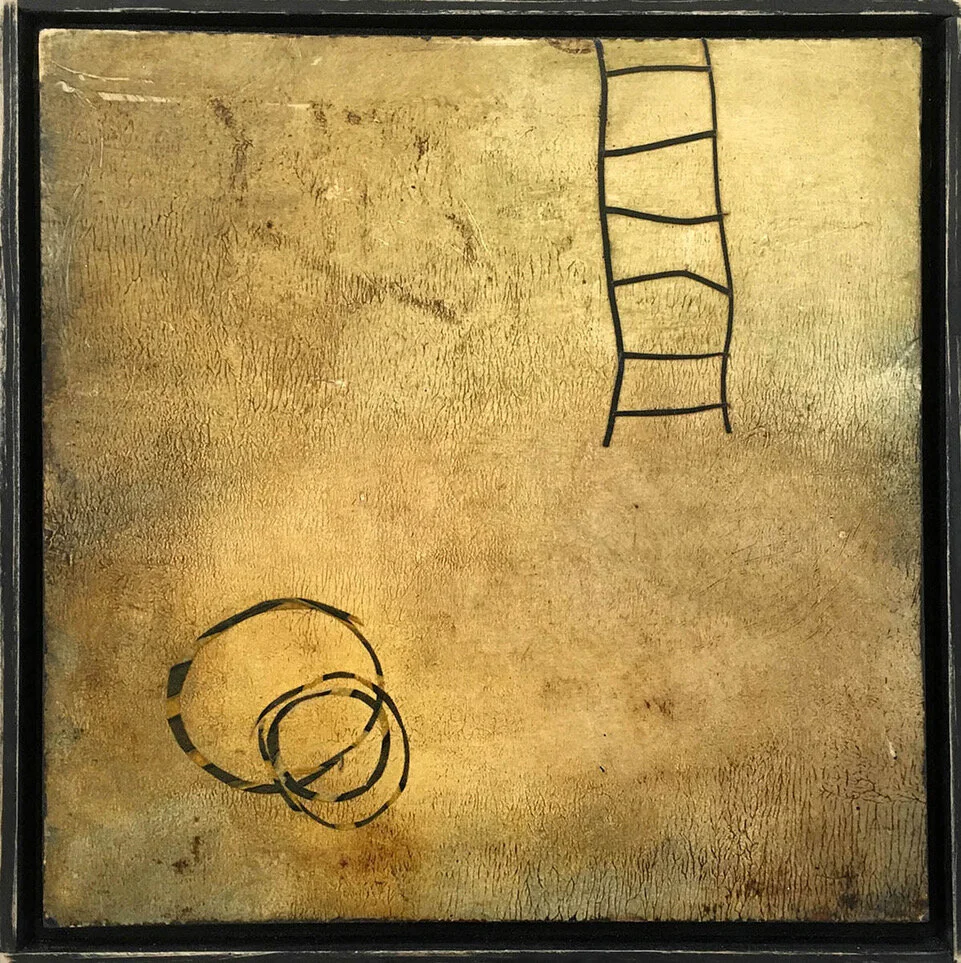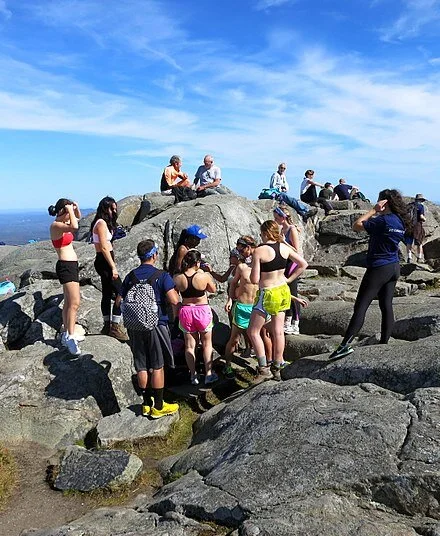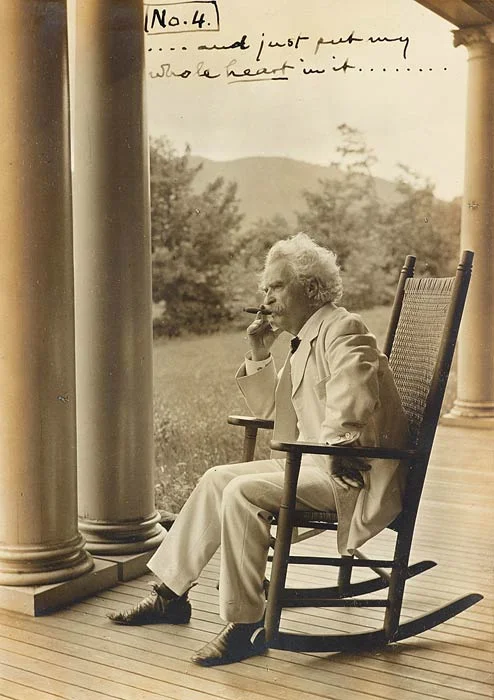
Art and civics in Peterboro
“Hidden Myth” (collagraph, wax, tape), by Soosen Dunholter, a Peterboro, N.H.-based painter.
Peterboro, in New Hampshire’s (Mount) Monadnock Region (named for the mountain that has long been reputed to be the second-most climbed in the world, after Mt. Fuji), is famous for the many writers and other artists who have lived and/or worked there. That’s party because of the MacDowell Colony, which has been a cozy and supportive place for writers, composers and visual artists to work since its founding, in 1907. One of its writers was Thornton Wilder, who is said to have based the community, Grover’s Corners, in his famous play Our Town on Peterboro. Peterboro is still more rural than not, but Boston’s exurban sprawl is pushing toward the town, which remains a weekend and vacation home for quite a few affluent people.
Peterboro is well known for its engaged and well-informed citizenry.
Next door is beautiful Dublin, the highest town in New England and the site of the headquarters of Yankee Inc., which publishes the eponymous magazine and the Old Farmer’s Almanack and has a couple of glorious lakes. For many years Dublin hosted Beech Hill Farm, a substance-abuse (mostly of alcohol) facility in an old mansion on top of Beech Hill that drew a fair share of celebrities who needed to dry out. The property is no longer used for that.
Children’s arts parade in Peterboro.
Bond House at the MacDowell Colony
The top of Mount Monadnock on a typically crowded day in warm weather.
In Dublin: Art, astronomy, Yankee Inc., peace confabs, Twain, etc.
“Close Call’’ (assemblage), by Robert Hauser, in his current show at the Putnam Gallery at the Dublin School, Dublin. N.H.
The gallery says that Mr. Hauser is an artist and conservator “who works in assemblage and the Gestalt Theory. In this show, he explores the history of developments and discoveries in astronomy. Each work is based on a single concept and reflects his engagement with ideas, cultural responses and personal connections to knowledge. Each piece is not a statement but an opportunity for association and development of a narrative by the viewer with both the work and the ideas that inspired it.’’
Dublin, long a weekend and vacation refuge for wealthy Bostonians, New Yorkers and Philadelphians, is also known as the highest town in New England; headquarters of Yankee Inc. which publishes The Old Farmer’s Almanac and Yankee magazine; an estate, with a mansion, called Beech Hill Farm that later became a famous “drying out spa’’ for alcoholics (some of them celebrities) and is now a private estate again, and the two Dublin Peace Conferences, held at the Morse Farm in 1945 and 1965, out of which grew the United World Federalists.
Not usually bustling downtown Dublin
Mark Twain spent two summers in Dublin, and pronounced it his favorite place in the world. Here he is at Dublin’s Mountain View Farm, which he rented in 1906.
More than enough of it
Adapted from Robert Whitcomb's "Digital Diary'' column in GoLocal24.com
“Yes, one of the brightest gems in the New England weather is the dazzling uncertainty of it. There is only one thing certain about it: You are certain there is going to be plenty of weather.”
-- Mark Twain lived many years in Connecticut but it was said that his favorite place in late life was Dublin, N.H. That's New England’s highest town and was once home of Beech Hill Farm, a famous drying-out clinic and retreat for mostly affluent alcoholics. It still hosts Yankee Publishing Inc., publisher of Yankee Magazine and the Old Farmer's Almanac.
And so we go into another spring, up and down weatherwise but trending the right way. First the flowers that can take freezing and thawing and refreezing – the crocuses and the snowdrops. Then the somewhat less hardy daffodils and the tulips.
It will be “Mud Time’’ for a few weeks in New England’s north country. And, of course, it’s pothole season!
A lot of folks are so impatient for spring that they strip down to shorts and T-shirts and wander around outside when it’s still in the forties, in a triumph of hope over experience.
Plant the radishes first!
The buds on the trees swell and then seem to almost explode on one afternoon in late April or early May—that is, except right along the coast, where the cold water delays the season as the warmed-up water delays winter late in the year. As visitors to Fenway Park know “Boston’s famous east wind’’ can drive down the temperature of a mid-April day by 20 degrees in 15 minutes.
Then comes that hot, humid day in late May or early June when the lushness is almost tropical. In New Hampshire when I lived there, it sometimes seemed as if winter ended one day and summer started the next.
Spring seems at once the real start of the year, at least of the natural year, as well as its ending, a feeling that for most people goes back to their memories of the school year’s approaching end.
This recalls the Rodgers & Hammerstein song "It Might as Well Be Spring,'' whose last lines are:
"I haven't seen a crocus or a rosebud or a robin on the wing
But I feel so gay in a melancholy way
That it might as well be Spring .
It might as well be spring….''
Warning! This uses the old-fashioned meaning of "gay''.
Something to look forward to
"Redbud Tree in Bottomload,'' photo by ELIOT PORTER, at the Portland Museum of Art (but photo is copyrighted by Amon Carter Museum of American Art, Forth Worth) in the Portland Museum's show "American Vision: Photographs from the Collection of Owen and Anna Wells''.
Please comment via rwhitcomb51@gmail.com
Jan. 7, 2014
Cold morning today but far from the "polar vortex'' catastrophe that it's being made out to be by the news media because their denizens think that nothing much else is going on. Of course, lots of stuff is going on but it bores those reporters and editors who haven't yet been laid off in the ferment caused by the triumph of mostly ''free'' information on the Internet. And maybe the public doesn't care all that much either.
Most importantly, "polar vortex'' sounds like a horror-movie monster. Very sexy. More vortexes to come because global warming is screwing up the jet stream? Too early to say with scientific assurance.
It's all rather typical of January, the coldest month. But February is often the snowiest because warm wet air begins to edge north again, setting up conflict with the cold air. Great for creating Nor'easters! Arctic air and the Gulf Stream can be in explosive proximity.
As I walked the dog this morning I enjoyed the crunch of my feet on the thin layer of snow that had fallen overnight as the front swung through from Canada, bringing a snow squall or two. And the frozen trees were creaking. Too cold to be slippery! The problem in the coastal Northeast is the wind. It can make urban walking miserable. When I lived in the Upper Connecticut River Valley, the temperature could be much colder than in Boston, Providence, New York and Philadelphia but the comfort level much higher because there was much less wind and it was very, very dry. Sort of exhilarating -- bright and almost antiseptically clean.
Meanwhile, along the lines of ever-more "nurturing'' of children by parents and schools (at the ones I attended we were often called by our last names and there wasn't much open concern for our feelings), is the practice of clothing our dogs for winter walks, even outside of the Upper East Side of Manhattan. I must confess that my wife and I have adopted this habit. The dog, a rescue mutt from San Antonio (via "Alamo Rescue''), fought having a coat on at the start but has since accepted it -- especially when it's windy.
My most physically painful memories of winter are in the streets of big cities with the northwest wind squeezing between the high buildings.
When it's really, really cold, ice is so sticky that you don't even worry about driving up and down steep snow-covered hills. A few times I had to drive my drunken mother to a drying-up spa at a place called Beech Hill Farm, on top of a mountain in Dublin, N.H. -- the little town where Yankee magazine was, and is, put out and where Mark Twain spent some happy times. If it was the winter, I'd pray for very cold weather. Around freezing was the most insidious, with a thin layer of melting in the sun, then quick refreezing toward evening.
The dramatic freeze-thaw cycles in New England make skiing more, well, exciting here than on the dusty, dry "powder snow'' promoted by resorts in the Rockies. Skiing in the White and Green mountains is much more of a challenge to muscles and nerves than is skiing at, say, Taos.
Anyway, I long for late February, when sun-facing cars and rooms suddenly seem to start to warm up much faster as the sun gets stronger. Even on a very cold day last week, I found the stone on a southwest-facing wall remarkably warm. We really do need to do a lot more with passive solar heating.








